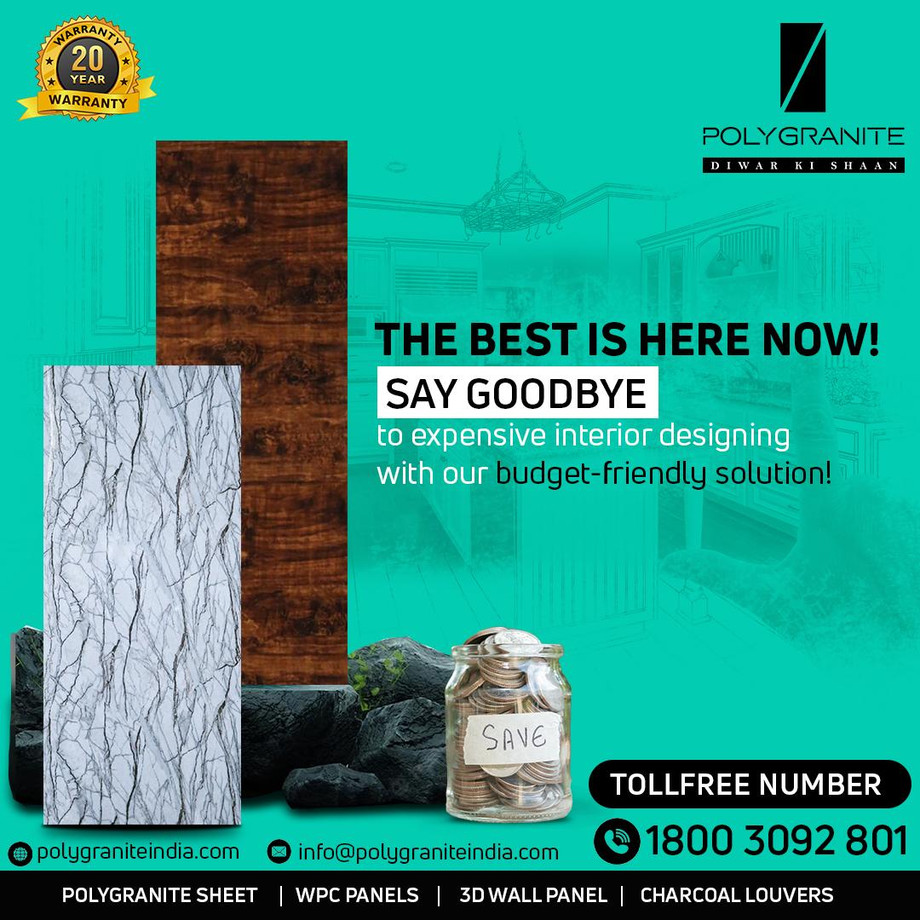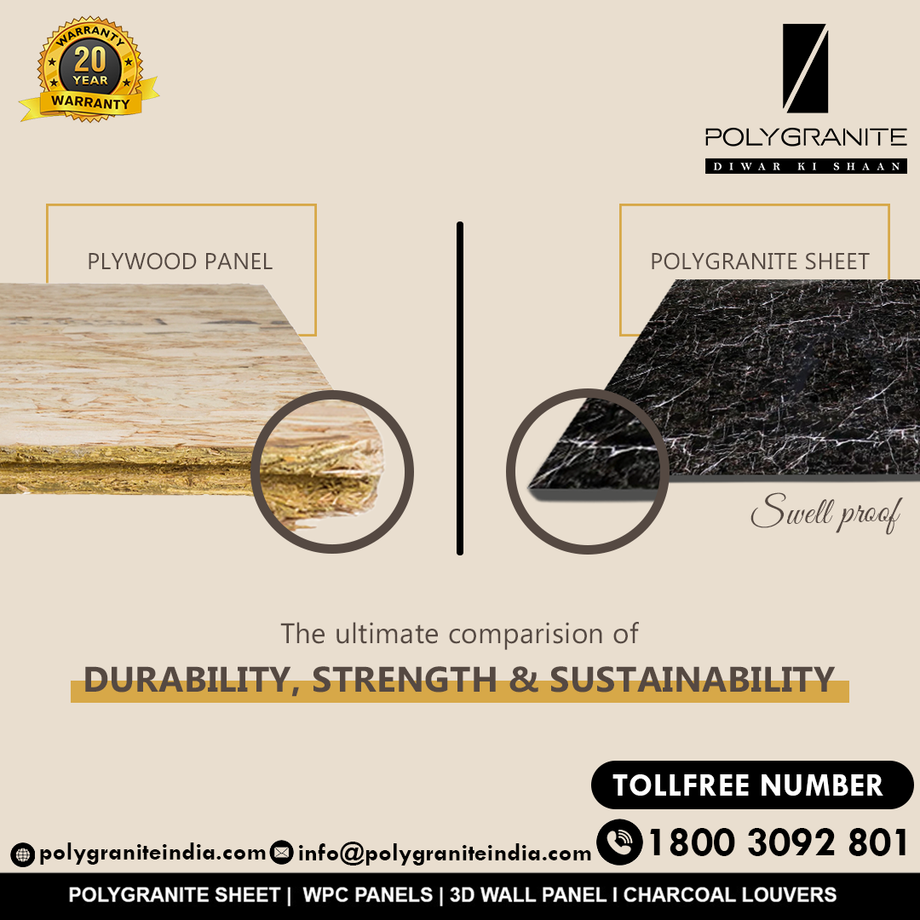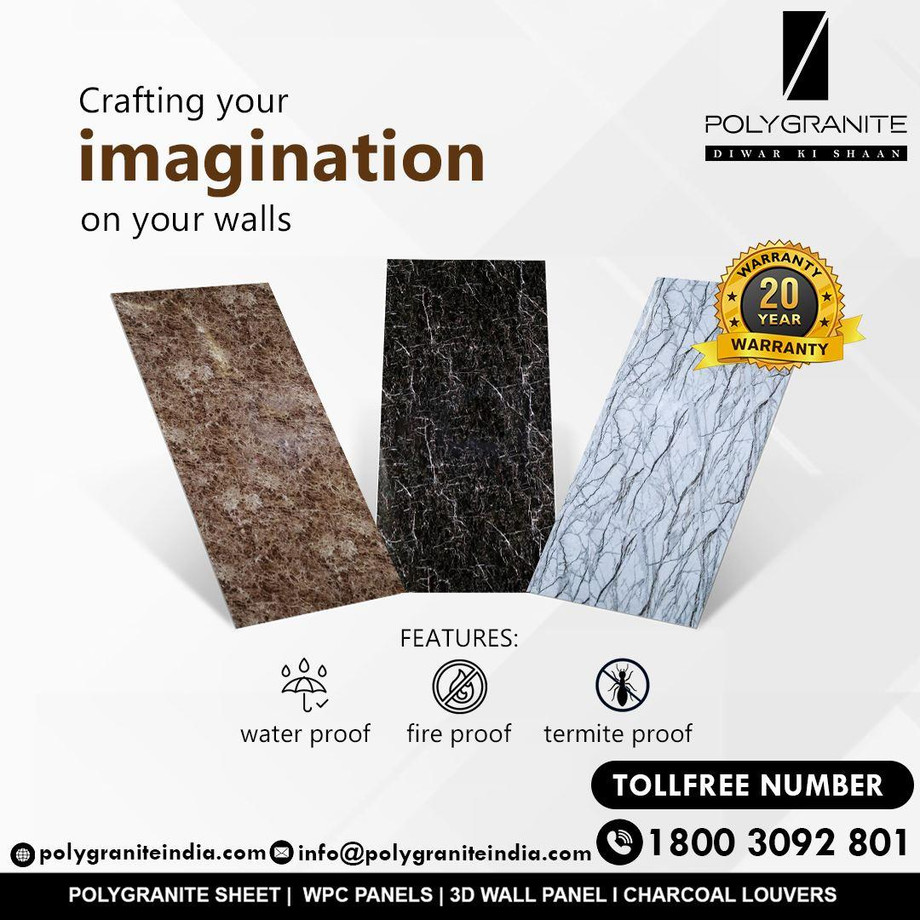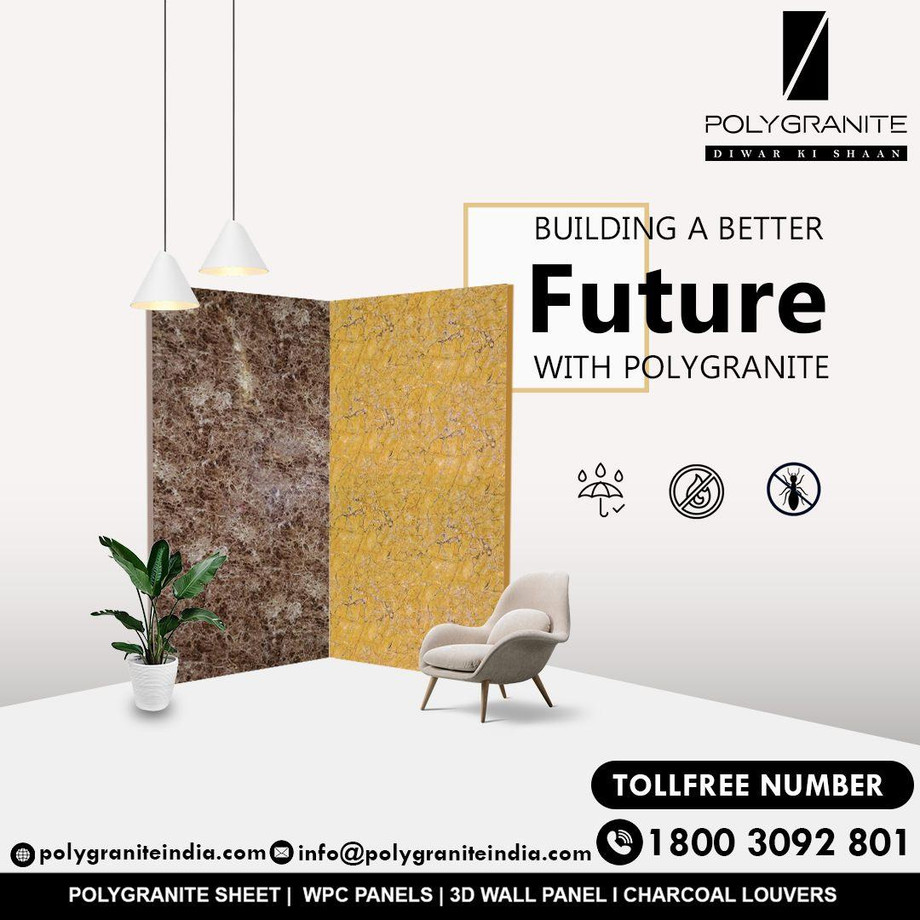Introduction -
In the manufacturing industry, economic factors play a crucial role in decision-making processes. With the emergence of innovative alternatives to traditional materials, such as polygranite sheets, plywood manufacturers face the challenge of assessing the economic advantages of adopting these new materials. This blog post aims to analyze the economic benefits of plywood manufacturers compared to polygranite sheets, highlighting key factors that influence profitability, cost-effectiveness, and market competitiveness.
1. Material Costs and Availability -
One of the primary considerations for manufacturers is the cost of materials. Plywood, traditionally made from wood veneers, has been a cost-effective choice for many years due to the abundance and relatively low cost of timber. However, with increasing deforestation concerns and the fluctuation of timber prices, the availability and cost of plywood materials have become less predictable.
Polygranite sheets, on the other hand, are manufactured using recycled plastic, stone, and other additives. Although the initial cost of these materials may be slightly higher, their availability is not dependent on the availability of timber resources. As the demand for sustainable alternatives increases, the cost of recycled plastic may stabilize or even decrease over time. Therefore, plywood manufacturers should carefully consider the long-term cost stability and availability of materials when comparing the economic advantages of polygranite sheets.
2. Manufacturing Efficiency and Productivity -
Efficiency and productivity are crucial factors that impact the economic viability of a manufacturing process. Plywood production involves multiple steps, including cutting, drying, and bonding wood veneers. These processes require significant energy consumption, specialized equipment, and skilled labour. Any inefficiencies in these stages can result in increased production costs and reduced profitability.
In contrast, polygranite sheet manufacturing can be more streamlined and efficient. The process typically involves melting and molding recycled plastic with stone and other additives, which can be automated to a large extent. This automation reduces labour costs, minimizes the chances of human error, and enhances overall productivity. Moreover, the production of polygranite sheets requires less energy compared to plywood manufacturing, leading to potential energy cost savings for manufacturers.
3. Reduced Waste and Losses -
The manufacturing industry often grapples with waste and material losses, which can significantly impact profitability. Plywood production generates waste in the form of offcuts and wood chips, which may need to be disposed of or recycled. Additionally, defects in the wood veneers can result in rejected or substandard plywood sheets, leading to further losses.
Polygranite sheet manufacturing, on the other hand, typically produces less waste due to its precise molding process. Any excess material can be recycled and reused in subsequent production cycles. Moreover, polygranite sheets can be manufactured with consistent quality, reducing the chances of product rejection or rework. These factors contribute to reduced waste, minimized losses, and improved cost-effectiveness for manufacturers.
4. Maintenance and Repairs -
The durability and longevity of materials have a direct impact on maintenance and repair costs. Plywood, while widely used, is susceptible to warping, moisture damage, and pest infestation. Over time, these issues may require regular maintenance or even the replacement of damaged plywood sheets. The associated costs can accumulate, affecting the economic viability of plywood products.
Polygranite sheets, with their superior resistance to warping, moisture, and pests, require significantly less maintenance and repairs. The durability of polygranite sheets translates to long-term cost savings for manufacturers. The reduced need for frequent repairs or replacements results in improved product reliability and increased customer satisfaction, further enhancing the economic advantages of polygranite sheets.
5. Market Competitiveness and Customer Demand -
The market competitiveness of plywood manufacturers is closely tied to customer demand and preferences. In recent years, there has been a growing demand for sustainable and eco-friendly products. Customers are increasingly seeking alternatives to traditional materials that have a lower environmental impact.
Polygranite sheets, made from recycled plastic, align with the eco-friendly preferences of many consumers. By adopting polygranite sheets, plywood manufacturers can tap into this expanding market segment, attract environmentally conscious customers, and differentiate themselves from competitors who are slow to adapt.
Furthermore, the versatility and customization options offered by polygranite sheets can cater to a broader range of customer needs and preferences. From construction to furniture manufacturing and interior design, polygranite sheets offer creative possibilities that traditional plywood may struggle to match. This increased market competitiveness can lead to higher sales volumes and improved profitability for manufacturers.
Conclusion -
As the manufacturing industry evolves, plywood manufacturers must carefully evaluate the economic advantages of adopting polygranite sheets. Factors such as material costs, availability, manufacturing efficiency, waste reduction, maintenance, and market competitiveness all play a crucial role in determining the profitability and long-term viability of a manufacturing process.
Polygranite sheets offer distinct economic advantages, including potential material cost stability, streamlined production processes, reduced waste, lower maintenance and repair costs, and increased market competitiveness. By embracing polygranite sheets, plywood manufacturers can position themselves as leaders in sustainability, cater to evolving customer preferences, and drive profitability in an increasingly competitive market.





